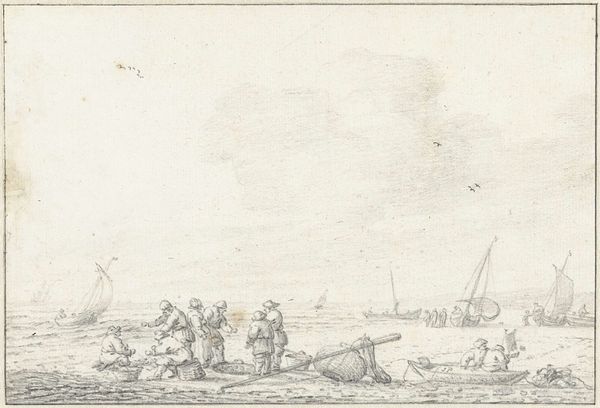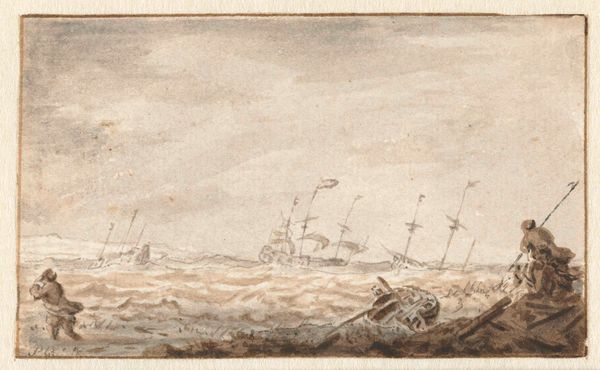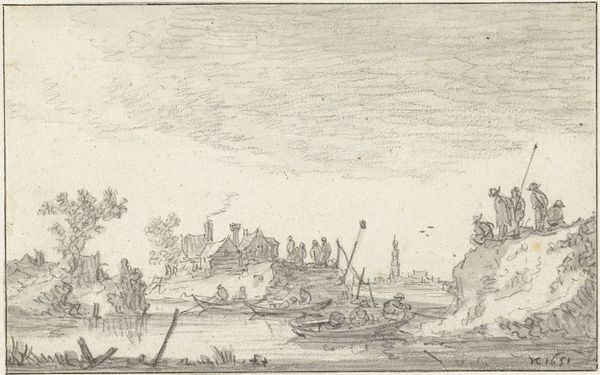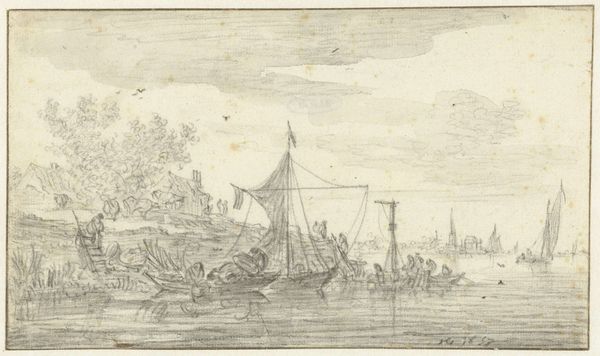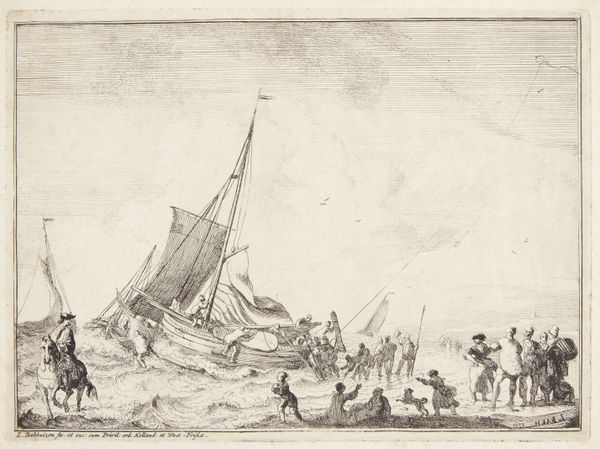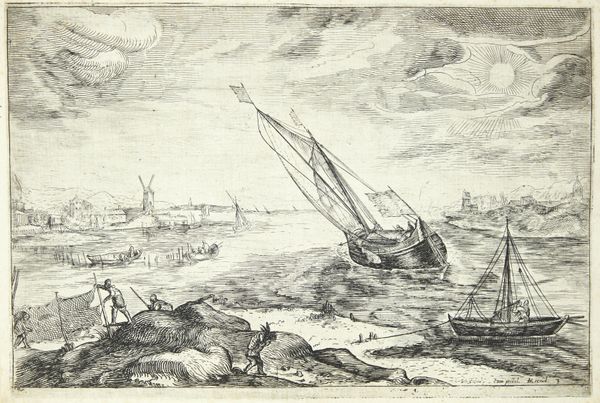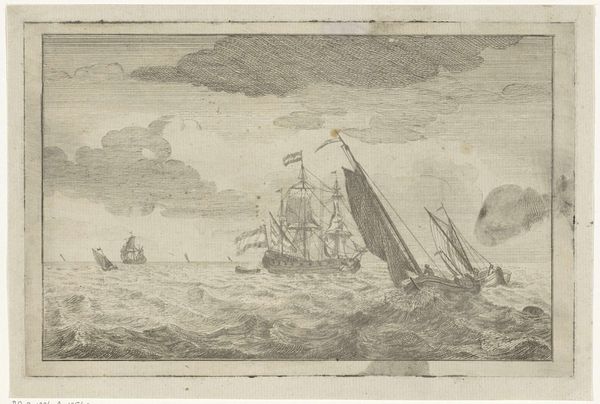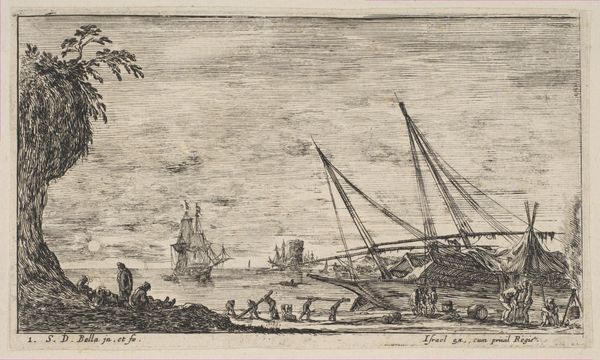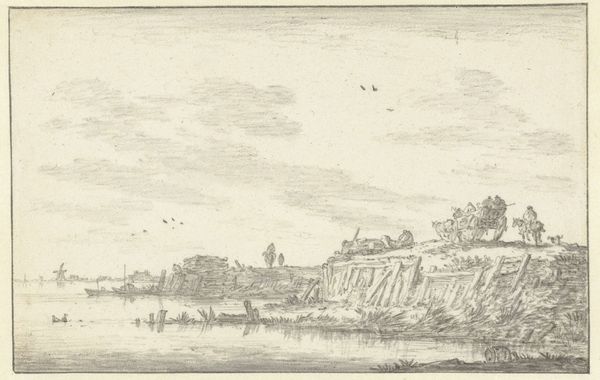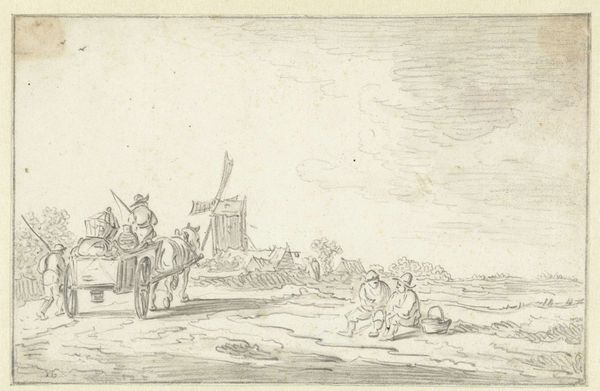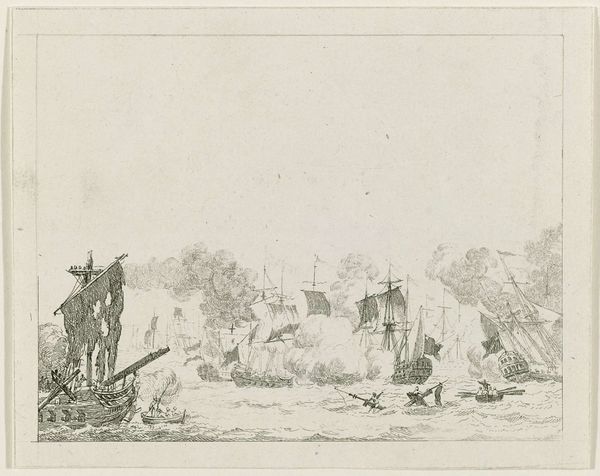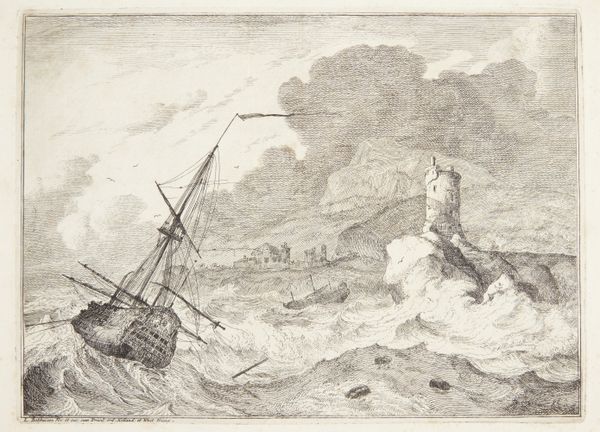
drawing, pencil
#
drawing
#
dutch-golden-age
#
pen sketch
#
pencil sketch
#
landscape
#
pencil
#
realism
Dimensions: height 124 mm, width 235 mm
Copyright: Rijks Museum: Open Domain
Editor: So this is "Vergezicht vanuit de duinen," a pen and pencil drawing by Pieter de Molijn, dated around 1650-1660. It feels incredibly…spare, almost desolate. Just a few lines suggesting a vast landscape. What stands out to you when you look at it? Curator: What I see is a distilled image of the Dutch Golden Age's relationship with its landscape. Consider the period: the Dutch Republic had just gained independence, and there was a surge of national pride intertwined with economic prosperity derived heavily from the land. This drawing isn't just a pretty view; it reflects the very foundations upon which Dutch society was built. Editor: Interesting. It doesn’t strike me as particularly celebratory. The broken fence, the lone figure... it seems more melancholy. Curator: And that melancholy itself can be interpreted as a form of social commentary. Perhaps on the transience of that prosperity, the constant need to manage and defend the land. Or maybe a meditation on individual isolation within a rapidly changing society. Remember that the art market at this time was booming. Who do you imagine might be viewing this drawing, and in what context? Editor: Maybe a merchant, someone tied to that landscape and its resources? Displayed in their home as a reminder of where their wealth came from? Curator: Exactly! It’s this complex interplay of national identity, economic forces, and individual experience that makes Dutch Golden Age landscapes so fascinating. It makes you think about who has the right to represent and profit from an idea of nationhood. Editor: I see what you mean. The drawing is a window into a specific cultural and economic moment. Curator: Precisely. By exploring those connections, we gain a deeper understanding of not just the artwork itself, but the society that produced it. It certainly made me question my initial thoughts. Thanks for your insights.
Comments
No comments
Be the first to comment and join the conversation on the ultimate creative platform.

